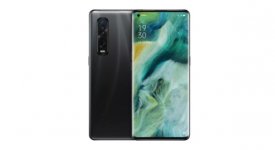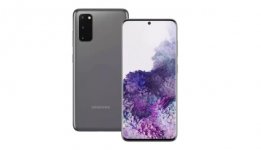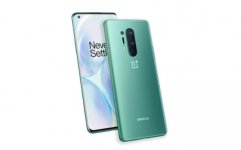The best camera phones available now

(Image credit: Huawei)
01. Huawei Mate 40 Pro
An insanely good photography experienceRelease date: November 2020 | Weight: 212g | Dimensions: 162.9 x 75.5 x 9.1 mm | OS: Android 10 | Screen size: 6.76-inch | Resolution: 1344 x 2772 | CPU: Kirin 9000 5G | RAM: 8GB | Storage: 128/256GB | Battery: 4400mAh | Rear camera: 50MP (wide, f/1.9) + 12MP (periscope telephoto, f/3.4) + 20MP (ultrawide, f/1.8) | Front camera: 13MP (ultrawide, f/2.4)
First things first - the Mate 40 Pro has one tragic flaw, and it’s a deal-breaker for most people. Thanks to the Google trade ban in the US, you can’t access Google’s own app store. Huawei’s store is still playing catch up, and you’re likely to be frustrated with certain apps not working, even if you can easily download them online.
Having said that, the Mate 40 Pro is still the best camera phone in the world, offering the best overall complete package. Both regular and ultra-wide angle shots look superb in both well-lit and dark conditions, while the 5x optical zoom performs remarkably well even in lower light too. Focusing is fast and snappy, and the front-facing selfie camera also crams in larger groups, thanks to its wide-angle lens.
Throw in super-stabilized video with impressive HDR for good measure, and you have a smartphone with a camera that’s capable of excelling at any task you care to throw at it. If you care about photography more than anything else, this is the current smartphone to beat.

(Image credit: Apple)
02. iPhone 12 Pro Max
The best smartphone camera for most peopleWeight: 228g | Dimensions: 160.8mm x 78.1mm x 7.4mm | OS: iOS 14 | Screen size: 6.7-inch | Resolution: 1284 x 2778 | CPU: A14 Bionic | RAM: 6GB | Storage: 128GB/256GB/512GB | Battery: 3687mAh | Rear camera: 12MP + 12MP + 12MP | Front camera: 12MP
The iPhone 12 Pro Max ranks right near the top of the list as one of the very best camera phones in the world. It has a 12MP f/1.6 main camera, a 12MP f/2.2 telephoto one (along with 2.5x optical zoom), a 12MP f/2.4 ultra-wide camera, and a bonus LiDAR scanner, for great Night Mode portraits.
Night and low light shots is something the iPhone 12 Pro Max clearly excels in, made possible by its large sensor. Night Mode itself can be used with both the main and ultra-wide sensors too, which is another handy bonus for low light photographers.
A new feature Apple has introduced is HDR3, which combines multiple exposures to create the best possible shot, which can be applied in all lighting conditions.
Throw in a bunch of great editing features and Dolby Vision video, it’s plain to see this is by far the best camera setup Apple has ever produced. For most people, this is the absolute best smartphone camera experience currently available, as it doesn’t have the major app problem that the Huawei Mate 40 Pro has.

(Image credit: Apple)
03. iPhone 12 & iPhone 12 mini
Best bang for buck iPhone cameraWeight: 164g / 135g | Dimensions: 146.7 x 71.5 x 7.4mm / 131.5 x 64.2 x 7.4mm | OS: iOS 14 | Screen size: 6.1-inch / 5.4-inch | Resolution: 1170 x 2532 / 1080 x 2340 | CPU: A14 Bionic | RAM: 4GB | Storage: 64GB/128GB/256GB | Battery: 2,815mAh / 2,227mAh | Rear camera: 12MP+12MP | Front camera: 12MP
The iPhone 12 and iPhone 12 mini serve up the exact same camera experiences and are both a noticeable step down from the iPhone 12 Pro models. They lost both the telephoto lens and LiDAR scanner, and have a 12MP f/1.6 main camera, a 12MP f/2.2 ultra-wide one, and a 12MP f/2.2 snapper on the front.
Despite losing a few features to their Pro brothers, all of the cameras perform well and continue to beat most other handsets in low light environments. Smart HDR3 is still included, making use of AI to enhance images, while Dolby Vision also remains for adding more flair to your recordings.

(Image credit: Huawei)
04. Huawei P40 Pro
Best value flagship cameraRelease: April 2020 | Screen size: 6.5" | Screen type: OLED | Resolution: 1200 x 2640 pixels | Sharpness: 441 PPI | Certification: HDR10, 90Hz | Dimensions: 158.2 x 72.6 x 9 mm | Weight: 209g | Rear camera: 50MP (wide + OIS) + 40MP (ultra-wide) + 12MP (telephoto) | Front camera: 32MP (wide) | Maximum video resolution: 4K, 60fps | Storage: 128GB-512GB | Memory card slot: Yes (Nano Memory) | Battery: 4500mAh | Pen input: No
Huawei’s successor to the fantastic P30 Pro is a worthy follow-up from a camera point of view, but the phone isn’t as easy to recommend as its predecessor. The reason for this has nothing to do with its hardware; it’s all down to the US-China trade war, and the fact Huawei can’t use Google services on its phones at the moment at the behest of President Trump himself. While the P40 Pro will be a dream for anyone trying to uncouple themselves from Google, therefore, definitely read up on it before you pick one up, as the implications are far-reaching.
Google stuff aside for a second, and there’s no denying the camera power behind this flagship smartphone. It packs four cameras around the back and two on the front. Delivering a stellar main camera with a 50MP sensor resolution and a nice and wide 23mm field of view, come day or night, it nails it. Then there’s the 5x periscope zoom – it pulls in close and stays sharp. Add to the mix an ultra-wide, GoPro style camera as well as a depth sensor, and all your bases are covered, with the P40 Pro bettering big hitters from Google and Samsung.
With up to 256GB storage and a nippy processor, the internals will leave you wanting for nothing, and when they come packaged in such a beautiful glass and metal chassis, the outside matches what’s within. It even feels special; Huawei has curved the screen on all four sides, so whether you’re swiping in from up, down, left, or right, your thumb will effortlessly glide across the display.

(Image credit: Google)
05. Google Pixel 5
Solid camera with great software and editing smartsRelease date: October 2020 | Weight: 151g | Dimensions: 144.7mm x 70.4mm x 8mm | OS: Android 11 | Screen size: 6-inch | Resolution: 2340 x 1080 | CPU: Snapdragon 765G | RAM: 8GB | Storage: 128GB | Battery: 4000mAh | Rear camera: 16MP + 12MP | Front camera: 8MP
https://www.anrdoezrs.net/links/636...89100/https://store.google.com/config/pixel_5
The Google Pixel 5 actually has a rather simple, less feature-packed imaging setup with only two lenses – a 12.2MP f/1.7 main camera, and a 16MP f.2.2 ultra-wide offerings. That’s right, Google has opted for no telephoto zoom camera, which is a shame.
Despite this, the Pixel 5 uses the tools available very well, capturing crips, detailed shots with accurate colors in good lighting, although performance drops somewhat in low light conditions. While the ultra-wide lens is great for cramming more into a single shot, there is some noticeable distortion at the edges.
An area in which the Pixel 5 really shines though, is its software, with features like Portrait Light brightening faces and subjects, along with a powerful set of in-built editing tools for perfecting shots after they’re taken.

(Image credit: Samsung)
06. Samsung Galaxy Note 20 Ultra 5G
The best camera phone for detailRelease date: August 2020 | Weight: 208g | Dimensions: 164.8 x 77.2 x 8.1 mm | OS: Android 10.0 | Screen size: 6.9-inch | Resolution: 1440x3088 | CPU: Exynos 990 | RAM: 12GB | Storage: 256GB | Battery: 4,500mAh | Rear camera: 108MP + 12MP + 12MP | Front camera: 10MP
The Note 20 Ultra is a camera phone behemoth on paper. Its main sensor resolution is a whopping 108MP, and its Galaxy S20 Ultra-beating optical zoom gets you as close to the action as the P40 Pro. That being said, the main reason the Samsung Galaxy Note 20 Ultra 5G isn’t higher on our list is its automatic mode. Unless you switch to night mode or Pro Mode, it just isn’t quite where the competition from Huawei is in low light, and its focus falls short on occasion when capturing stills, even if it does pack best-in-class video autofocus.
The Note 20 Ultra’s night mode is also very good - a huge improvement over that of its predecessor. The phone also packs stellar zoom performance with a 120mm optical range and fantastic video capabilities. That said, as a point and shoot, the camera falls short when compared to the iPhone 11 Pro or the P40 Pro Plus.
Any quibbles, however, may not matter for creatives you just want to doodle. The Note-series is the best out there if you’re a fan of putting pen to screen on your mobile. With its Wacom digitizer and 4,096 levels of pressure sensitivity, you can fire up an app like Autodesk Sketchbook Pro and create multi-layered files on the go, then import them into Photoshop to work on when you get back to your studio. The S Pen’s iPad Pro matching 9ms latency and the screen’s 120Hz refresh rate combine beautifully with the phone’s Dynamic AMOLED technology to look spectacular - and its design is also something special too.

(Image credit: Oppo)
07. Oppo Find X2 Pro
Best for file-hoardersRelease: March 2020 | Screen size: 6.7-inches | Screen type: OLED | Resolution: 1440 x 3168 pixels | Sharpness: 513 pixels-per-inch | Certification: Gorilla Glass 6, HDR10, 120Hz | Dimensions: 65.2 x 74.4 x 8.8 mm | Weight: 217g | Rear camera: 48MP (wide + OIS) | Front camera: 32MP (wide) | Maximum video resolution: 4K, 60fps | Storage: 512GB | Memory card slot: No | Battery: 4260mAh
Oppo has been relatively unknown until recently, but it landed with a bang. Last year, its branding was all over Wimbledon, and now it’s launched one of the best smartphones of the year so far, the Find X2 Pro.
From a camera point of view, the X2 Pro wows, introducing Sony’s new 48MP sensor to the world. Grabbing high-resolution photos with beautiful depth and plenty of detail, the great thing about photos shot on the Find X2 Pro is that they look natural and realistic, especially when set aside those captured on Samsung phones. Packing a 5x zoom telephoto camera, the Pro also gets you close to the action, and its ultra-wide camera is a pin-sharp 48MP, for GoPro-Esque shots you can crop into.
Delivering flagship power, decent battery life, and an absolutely jaw-dropping screen, inside and out, the X2 Pro impresses. That said, we haven’t even covered the phone’s two standout features – the X2 Pro delivers the fastest charging on the market - powering up from 0-100% in 38 minutes, not to mention over half a terabyte of storage as well – that’s three times what Samsung offers on the S20 Ultra. In turn, power users will love the fact Oppo has well and truly arrived

(Image credit: Samsung)
08. Samsung Galaxy S20 (& Plus)
Across the board excellentRelease: February 2020 | Screen size: 6.2-inches | Screen type: AMOLED | Resolution: 1440 x 3200 pixels | Sharpness: 563 pixels-per-inch | Certification: HDR10+, Gorilla Glass 6, 120Hz | Dimensions: 151.7 x 69.1 x 7.9 mm | Weight: 163g | Rear camera: 12MP (wide + OIS) + 64MP (telephoto) + 12MP (ultra-wide) + ToF sensor (on Plus only) | Front camera: 10MP (wide) | Maximum video resolution: 8K, 30fps | Storage: 128GB | Memory card slot: Yes | Battery: 4000mAh
The Samsung Galaxy S20 will probably be the most popular of the S20-series, even if it isn’t the most specced out. Its manageable size combined with a premium set of features and a sharp, punchy, bright screen means it’s a cracking phone, and the fact it costs a lot less than the S20 Ultra gives it plenty of appeals.
With three cameras around the back, including a 64MP 3x zoom telephoto camera, it packs plenty of pixels and pulls you right into the heart of the action for impressive shots at a distance. The main camera is the lower resolution at 12MP, but its nighttime performance is a big step up when compared to last year’s Galaxy S10. Combined with an ultra-wide camera and up to 8K video recording, the Galaxy S20, and S20 Plus cover all bases without breaking the bank as the S20 Ultra does.
Just like the iPhone 11 Pro, the S20 is water and dust resistant and supports wireless charging. Unlike iPhones though, you can bump up the phone storage with an SD card, and reverse the wireless charging, so your Samsung phone can power up your wearables, or indeed, an iPhone.

(Image credit: Samsung)
09. Samsung Galaxy S10 Plus
Note 10 Plus camera without a Note 10 Plus priceRelease: August 2019 | Screen size: 6.4" | Screen type: Dynamic AMOLED | Resolution: 1440 x 3040 | Sharpness: : 522 PPI | Certification: HDR10+ | Dimensions: 157.6 x 74.1 x 7.8 mm | Weight: 175g | Rear camera: 12MP (wide +OIS), 16MP (ultra-wide), 12MP (2x zoom +OIS), ToF depth sensor | Front camera: 10MP (wide) | Maximum video resolution: 4K, 60fps | Storage: 128GB-1TB | Memory card slot: Region pending | Battery: 4100mAh | Pen input: No
Samsung Galaxy smartphones are now so good that the latest iterations generally struggle to make strides on the last. But that shouldn't stop us crowing about its latest and greatest flagship – the Galaxy S10 Plus, which has raised the bar again for camera phones on release (just not by that much).
The triple camera on the rear is the obvious place to start. It’s no longer unique, but the remarkable dual f/1.5/f/2.4 aperture is certainly an attractive added bonus, meaning you can take eye-popping shots even in low light without any long exposure party tricks. And you can tweak the aperture to the other end of the spectrum in sunnier climes.
Samsung has also worked hard to reduce noise, too. We love the super slow motion 960fps function for getting creative with videos and the bokeh-enable selfie snapper is impressive as well.

(Image credit: OnePlus)
10. OnePlus 8 Pro
Glacier green meets a killer screenRelease: April 2020 | Screen size: 6.78-inches | Screen type: AMOLED | Resolution: 1440 x 3168 pixels | Sharpness: 513 pixels-per-inch | Certification: HDR10+, Gorilla Glass 6, 120Hz | Dimensions: 166.9 x 76 x 8.8 mm | Weight: 199g | Rear camera: 48MP (wide + OIS) + 8MP (telephoto) + 48MP (ultra-wide) + Color Effect sensor | Front camera: 16MP (wide) | Maximum video resolution: 8K, 30fps | Storage: 128/256GB | Memory card slot: Yes | Battery: 5000mAh
OnePlus phones have always screamed value for money, packing a select range of flagship specs while undercutting the best from the rest. The OnePlus 8 Pro pulls a bit of a switcheroo, bumping up the price, and packing in a bunch of extra features like wireless charging and water resistance, thereby competing for head-on with flagships from Samsung and Apple.
Luckily for OnePlus, in this instance, the gamble pays off. The OnePlus 8’s screen is the same panel as found on the Oppo Find X2 Pro, and it’s stunningly sharp, deep, and vibrant all at the same time. Its cameras incorporate Sony’s latest 48MP sensor, which grabs beautiful depth. Thanks to improved nighttime performance, even when the lights go down, pictures shot on it look great. Where it falls behind the Oppo Find X2 Pro and Huawei P40 Pro is zoom, though its 3x optical zoom matches that of its main competition, the Samsung Galaxy S20, and S20 Plus like-for-like.
The OnePlus 8 Pro is also a power-packed beast from a specs point of view. The processor is top of the line, it charges at up to 30W, both wired and wireless, which is a boon for anyone in a hurry, and thanks to its stereo speakers, it sounds as good as it looks. How well does it look? In its new, frosted Glacial Green guide, very good indeed; curving glass and metal masterfully for a rich-feeling device that’s easy on the eyes.
Last edited:
